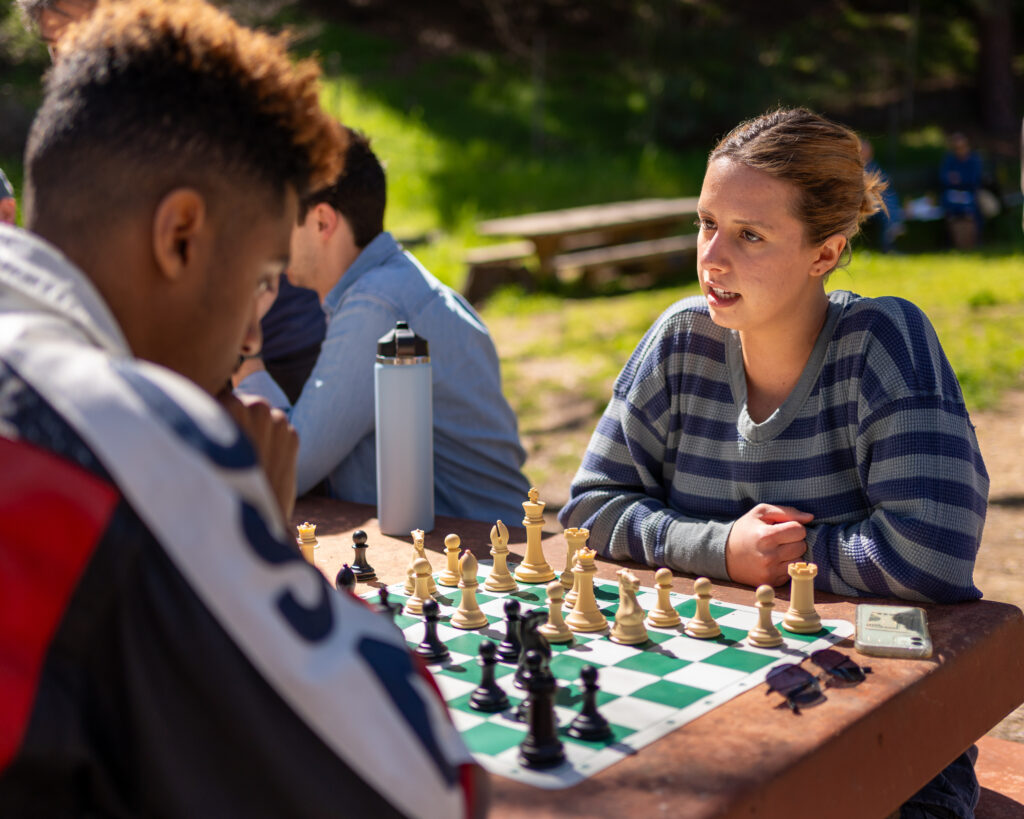
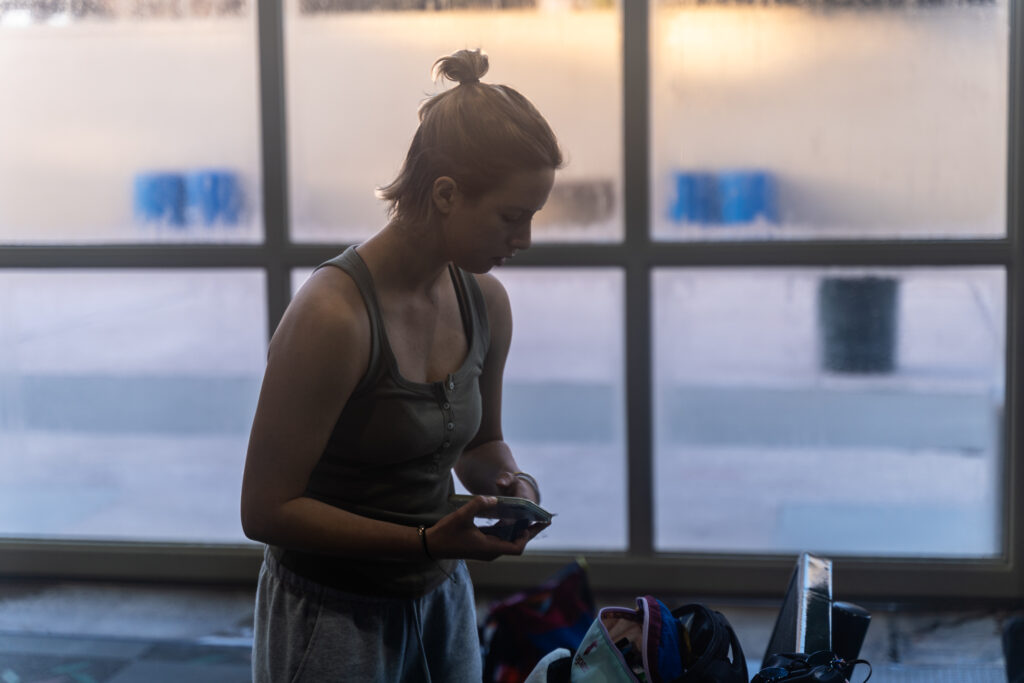
Tuesday, 6:53 a.m. A handful of people mill about the East LA College natatorium. It’s a casual morning. Bits of breakfast. In an olive tank and gray sweats, Edie Markovich checks her phone for the last time. Then she leaves.
Moments later, Markovich, an 18-year-old philosophy graduate student and ELAC Learning Center philosophy tutor, reappears. She wears a two-piece swimsuit. Black top, navy bottom. She pulls a cap and goggles out of a bag. Dons them. Stretches as she walks to the edge of the pool, and precisely at 7 a.m. dives in. She won’t touch land, nor any other solid thing, for the next 12 1/2 hours.
The swim today benefits her Outswimming Hunger and Outswimming Climate Change initiatives. Twenty-five miles, 880 laps, 1,759 flip turns, 12 hours, 27 minutes, for the greater good.
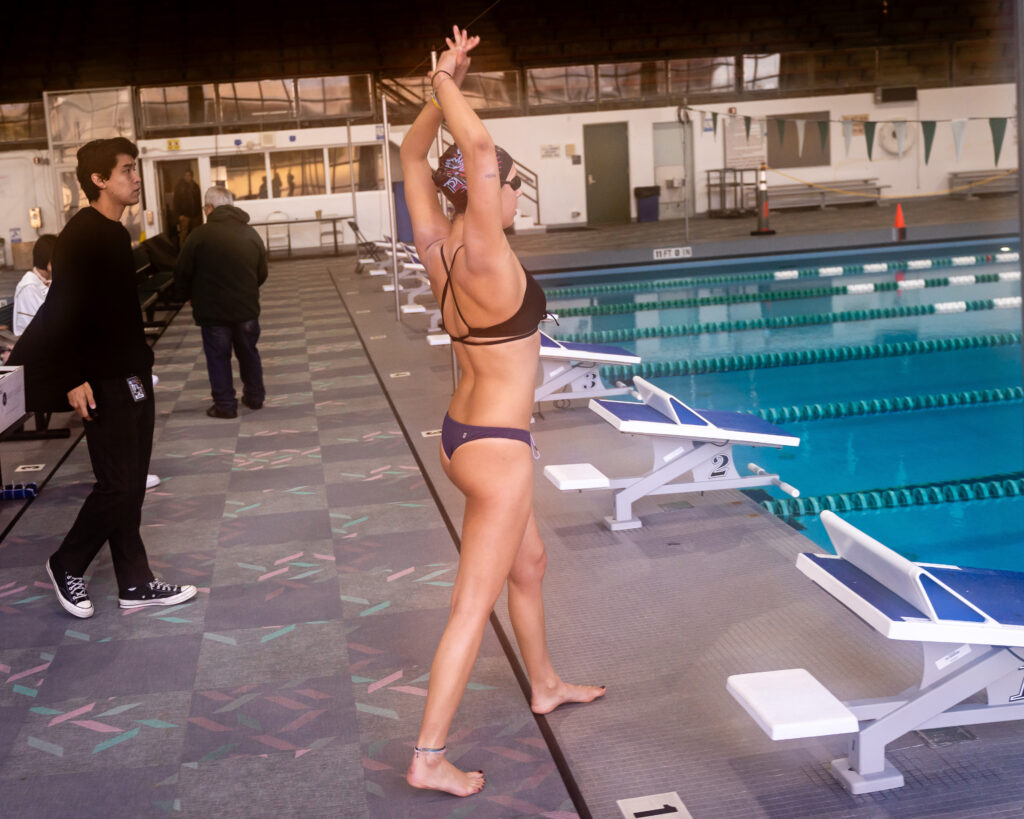
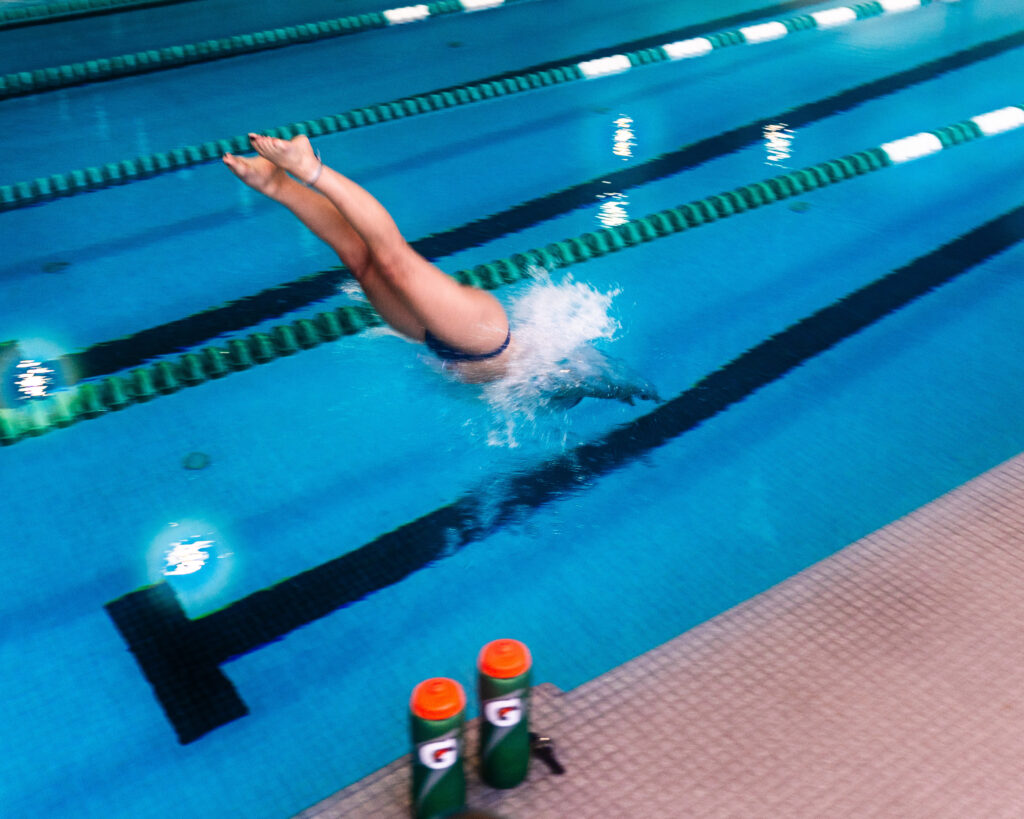
Is a 25-mile, 12 1/2 hour swim a lot? If you don’t know Markovich, you might think it’s a once-in-a-lifetime, herculean challenge. Yes, it is a challenge for Markovich. But she’s filled a resume with challenges like this.
The 25-mile pool swims are her community organizing events. A way to connect with the public and raise funds for hunger, climate change, and other causes she believes in.
Markovich’s real love is ocean swims. In Hawaii she swam from Molokai to Lanai, Molokai to Oahu, Maui to Lanai, and Maui to Molokai. In California, from the mainland to Anacapa, and from Catalina to the mainland. In New York she swam around Manhattan in the 20 Bridges Swim. In her ancestral home of Croatia she swam from Vis island to the Split peninsula. And circumnavigated the island of Šolta. In Greece, 2,500 years after Hydna of Scione, she repeated Hydna’s marathon swim. The second woman ever, other than Hydna, to do so.
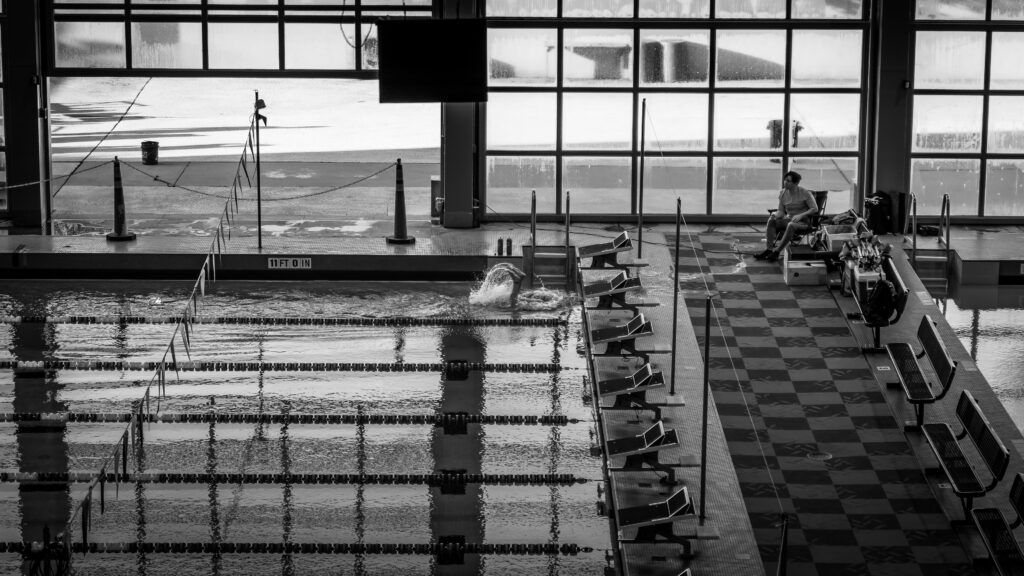
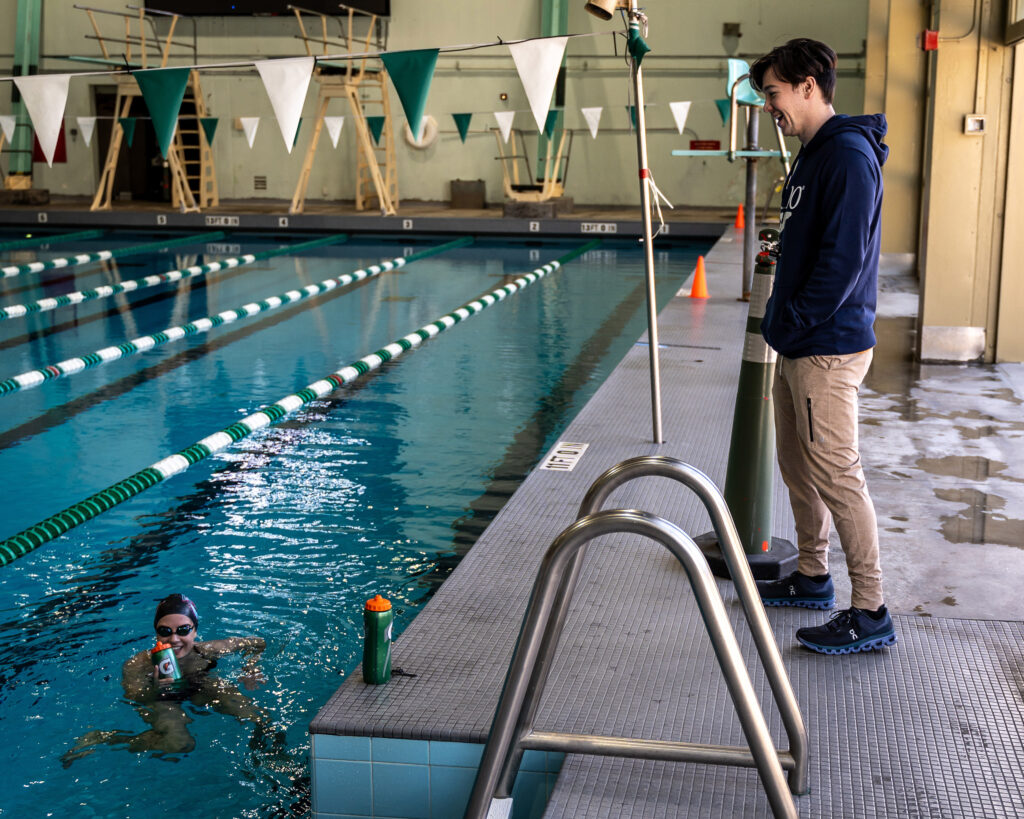
Why does Markovich do these long, endurance swims? At what age did she start swimming? Did she like it from the beginning? Or did her parents force her to do it? Did she fuss the first time she put her face in the water? When did she transition from “normal” swimming to endurance swimming?
These are all the wrong questions.
There was no point at which Markovich went to the water. She has always been of the water.
Diving into the vastness of the ELAC pool might seem like leaving home. Like entering a 300,000-or-so gallon liquid, alien world. For Markovich, it is returning home.
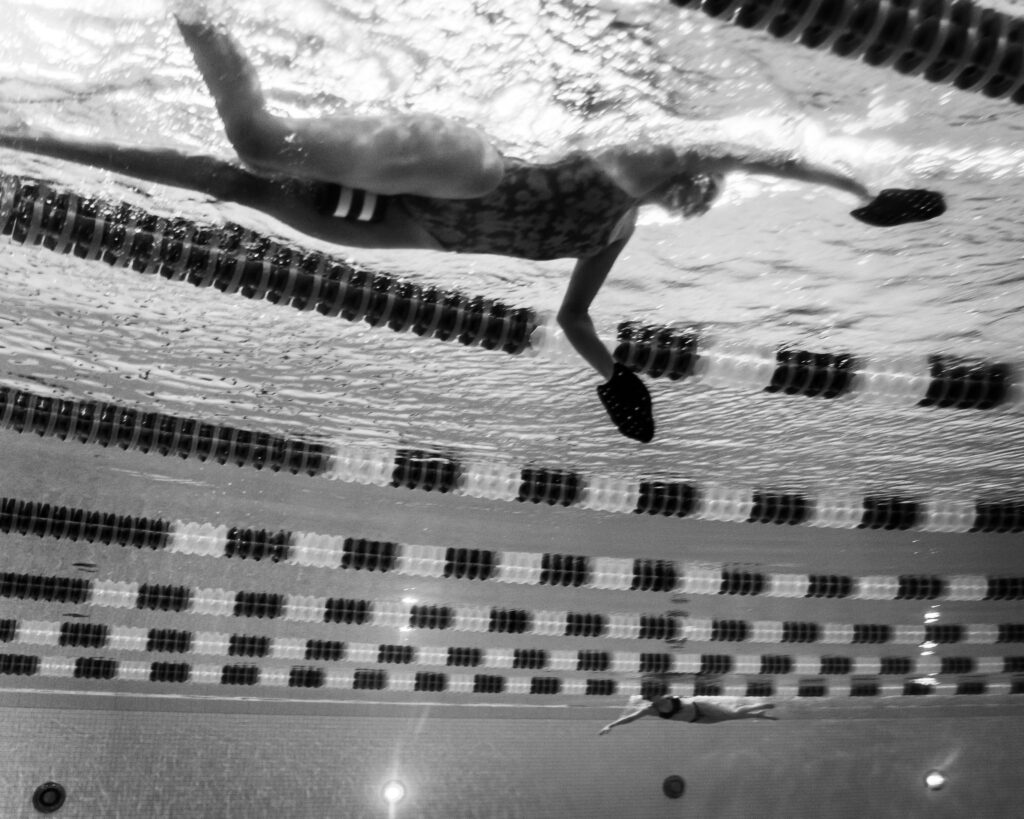
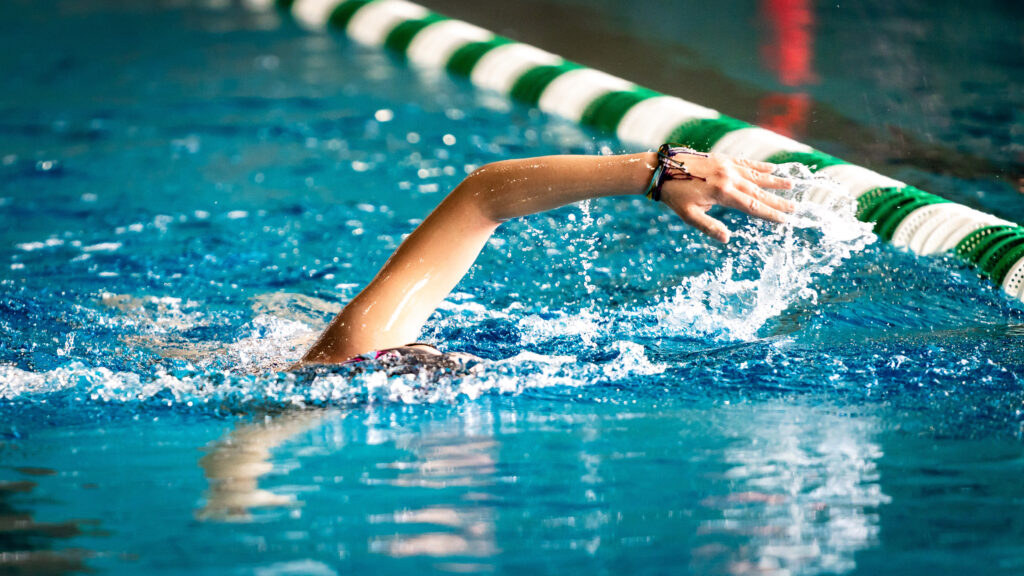
At about six months of age, before she could speak, Markovich managed to communicate to her parents that she needed to be in the water.
“Where did Edie go?”
“She’s just been under there.”
As Markovich describes it, “I was always under the water. They had to teach me to be on top of the water.”
Markovich says of swimming her first mile in the ocean, “I fell in love with it. I went farther and farther and farther. Until I did my first 10K. And then went on from there.”
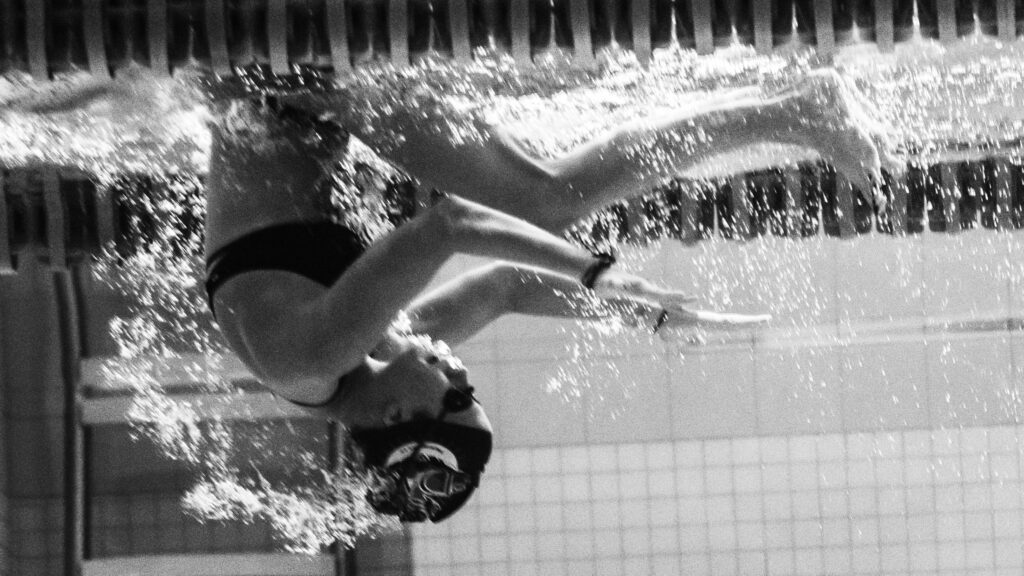
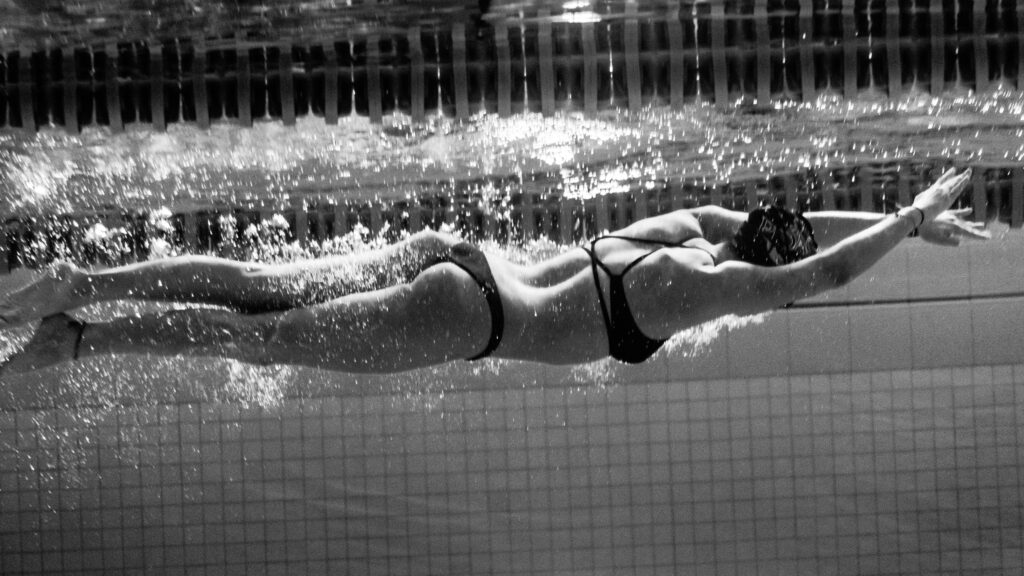
Competitive swimming events from 50 to 1,500 meters have never interested her. A creature of the water, she is drawn to the long swim, “My body and my stroke are made for endurance as opposed to sprints. Sprints don’t satisfy me the way endurance swimming does. This is on another level for me.
“It’s like I’m coming home. Submerging myself. It’s a different universe. Everything is shut out. Think about it, all your senses are impaired. Your sense of touch, your sense of smell, your sense of taste. Everything is infiltrated by the water. It’s all encompassing. You lose yourself in it. In the liquid universe.”
Edie Markovich
Some of her island-to-island swims start at 2 or 3 a.m., “You’re confronted with this darkness. You can’t even see your hand in front of you. It’s so pitch black. It’s more solitary in the ocean. But the ocean is itself this creature.”
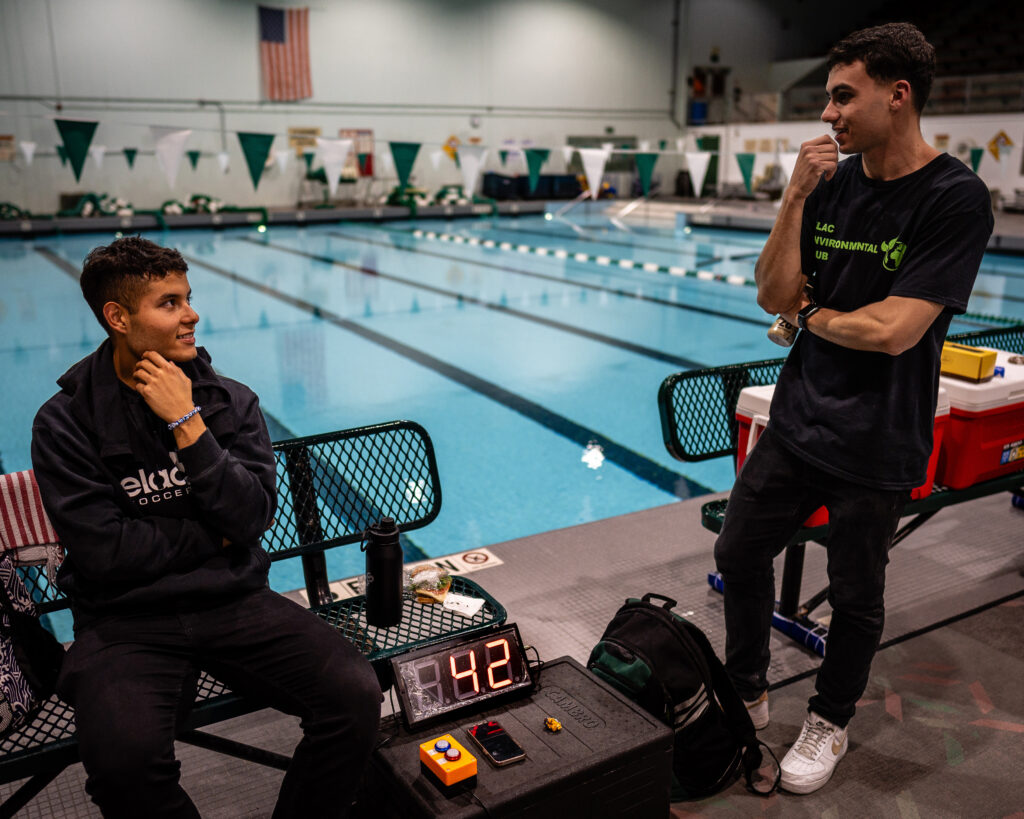
Humbling as these ocean swims can be, Markovich feels at home here. She loves being with people. But she also feels a need to have time alone. She sees the study of philosophy as a solitary pursuit. Philosophy and long swims. Opportunities to decompress from the chaos of our overstimulated lives on the land.
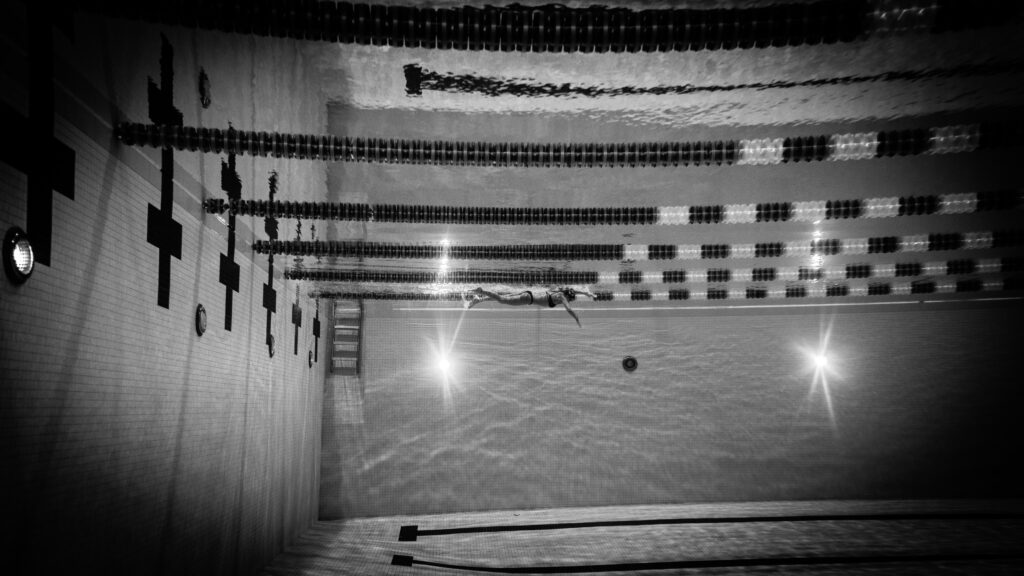
The first six hours are harder than the last six. At the start she has thoughts in her head. Around hour six in her ELAC swim she finds herself worrying about parking passes. Did all her friends get one? She listens to music. Not with a device, but in her mind. She thinks about philosophy and human nature and the things she’s studying in grad school. About halfway through her ELAC swim she gets in the zone and the second half of the swim is easier.
“You get into this state of flow where you’re not really thinking about anything. You’re just hearing the rush of water as it goes by.”
Easier, but still a long haul. A mental challenge. Markovich emerges from the pool about 7:30 p.m. She says to the friends cheering her on,
I couldn’t have done the last 90 without you guys.
Edie Markovich
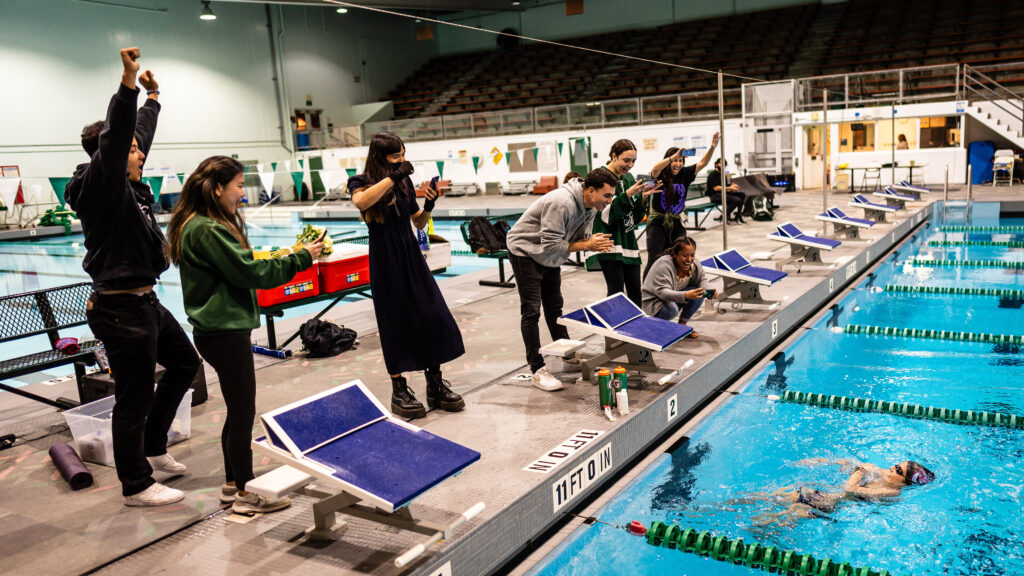
Markovich attended high school for one year. Then she decided it was time to study philosophy in college. She applied to the early entrance program at California State University at Los Angeles. She started at CSULA at age 14 and graduated with a B.S. in philosophy with a minor in classics in three years, at 17. Today she holds a college degree, but no high school diploma. Now 18, she’s got a semester-and-a-half left to complete her master’s degree in philosophy, also at CSULA. She’s starting to apply to Ph.D. programs.
“I’m a high school drop out.
“I see high school as this period of exploration. And I didn’t feel like I needed exploration. And so the early entrance program at Cal State provided an opportunity to get straight into what I know I want to do for the rest of my life.”
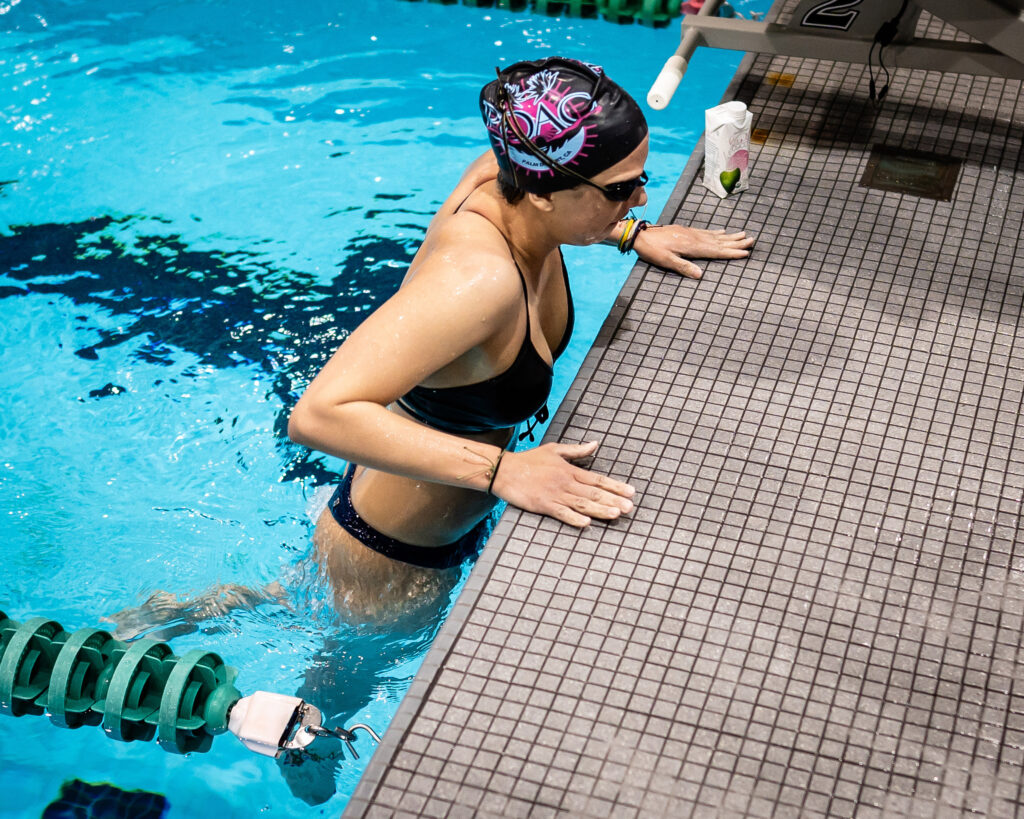
Studying philosophy came as easily to Markovich as swimming had. It felt like who she was, “The way my mind works, the way I go about living my life in this world, I feel I think like a philosopher.”
Markovich worried that philosophy wasn’t the most secure career option. She worried if it would pay enough. Then she read Dostoevsky’s “Crime and Punishment.” “It made me realize that this is the authentic path that I need to chase. And so, regardless of where it takes me, if it leads to instability, then so be it. I’ll be happy inside. I’ll be authentic.”
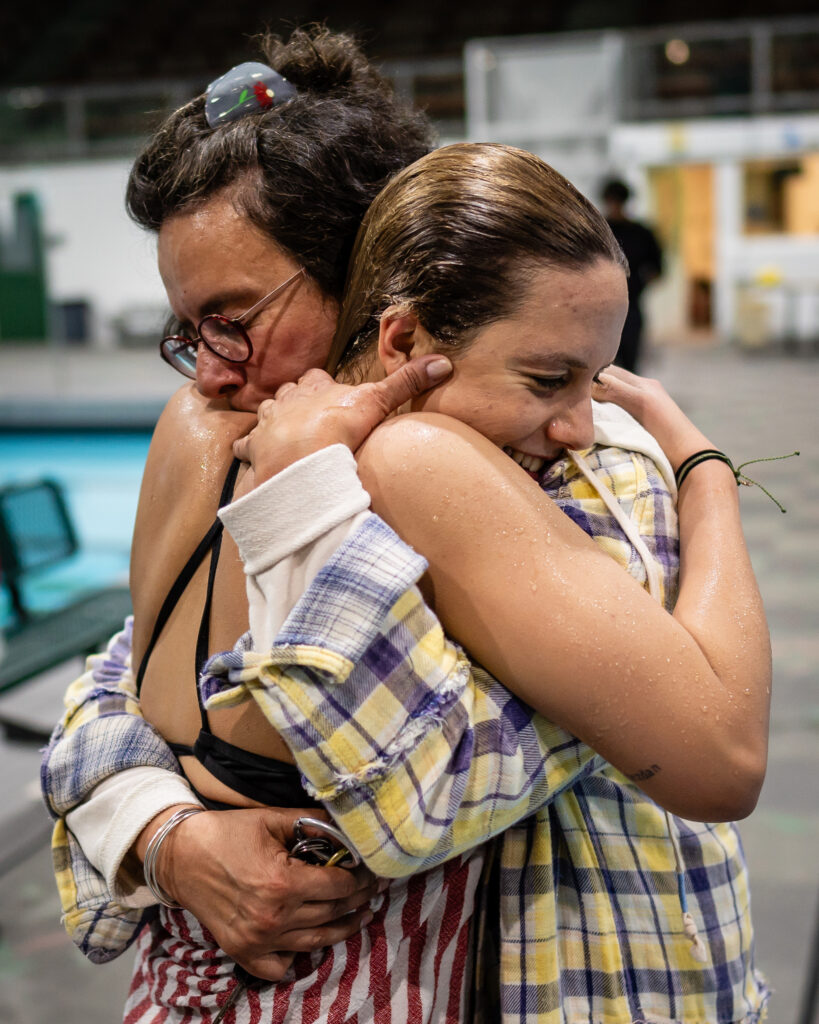
7:27 p.m. Twenty-five miles, done. Friends cheer. Markovich floats in the water for a few more minutes. Finally hauls herself out. She receives a towel and flowers. And lots of hugs. She has a night class at CSULA that’s half over. But she thinks she can still make it to the last half. Her mom hugs her and says,
Let’s just go home.
Deni Blaise, Edie Markovich’s mother.
Of her ELAC swim, Markovich says that she enjoys the opportunity to support causes she believes in. That it’s great to have friends and co-workers poolside to support her. But when asked to compare a long pool swim to an ocean swim, she says, “It’s not even close. Ocean swimming is me.
It’s this thrill, this exhilaration, like no other. You’re face to face with your humanity in its essential and crucial form.
Edie Markovich
More Stories
Mollie Jimenez, Luchadora?
Mollie Jimenez, 109-pound weight class women’s wrestler from East Los Angeles College, wins 2 of 3 bouts at the Leader of the Pack tournament.
Women’s Wrestling: ELAC vs Mt. SAC
In a close South Conference match, the Mt. SAC Women’s Wrestling team held off host East Los Angeles College, 33-24
ELAC Huskies split Basketball double-header with PCC Lancers
The ELAC Huskies and PCC Lancers men’s and women’s basketball teams split a double-header at the ELAC South Gym.
Debbie Green, Nicole & Dana Vargas
A conversation with volleyball setter and coach Debbie Green-Vargas and her setter daughters Nicole and Dana Vargas a few hours before they face each othre in the UCSB Thunderdome.

